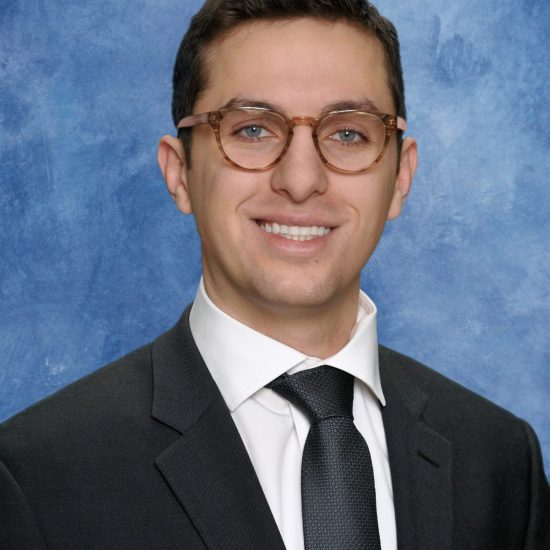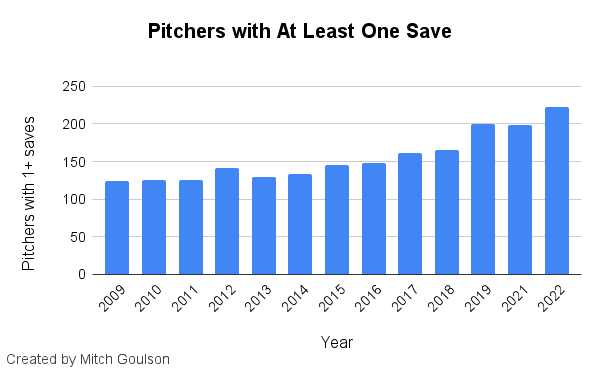The last fantasy baseball season was certainly unique. Aaron Judge hit 16 more home runs than anyone else, 39-year-old Justin Verlander came off Tommy John surgery to have the best season of his career, a plethora of rookies broke out, and the injury bug plagued many of the usual suspects. Let’s look at five lessons we can take away from the 2022 season.
1. The Return of Small Ball
For a long time, home runs were plentiful. If one couldn’t grab a top home run hitter with their first few picks, several would inevitably appear on the waiver wire midseason. Whereas 20 homers was a major accomplishment decades ago, the feat is now more common as players have adjusted their launch angle upwards.
Despite one of the greatest displays of power the MLB has ever seen, Aaron Judge’s 62 home runs were an outlier in the league’s first season post-juiced balls. There were 5,215 home runs hit in 2022, 12.2% less than the 5,940 hit in 2021. Excluding the pandemic-shortened 2020 season, 2022 had the fewest home runs since 2015.
The lack of the juiced ball, combined with coming rule changes meant to speed up the game (such as a limit on how many times the pitcher can throw over to a base), may usher in a new era of small ball. With more opportunities available on the base paths, batters may finally become less concerned with launch angle and perhaps someone will reach the 60-steal plateau for the first time since Dee Strange-Gordon did it for the Marlins in 2017. In place of home runs may be a reversion to former emphasis on stolen bases, as well as high average and OBP.
2. Closers Become a Dying Breed
The catcher position has been the tight end of baseball for a long time. Outside of a few bright spots, the position is a barren wasteland. Like tight end, the typical draft strategy for catchers is to grab a good one early or wait on one late. Due to a recent shift in how many teams utilize their bullpens, it is nearly time to treat closers the same way.
Emmanuel Clase put together an incredible season for the Guardians, saving 42 games along with sterling ratios (1.36 ERA, 0.73 WHIP); however, only Atlanta’s Kenley Jansen joined him in the 40-save club. More teams have begun mixing and matching relievers based on favorable matchups, especially those teams without a dominant back-end option. What began as just another quirky Rays innovation has now influenced several teams to embrace some form of a closer-by-committee strategy. As shown in the chart below (which excludes the pandemic-shortened 2020 season), 223 pitchers recorded at least one save in 2022, continuing this metric’s strong upward trend over the last decade.
For fantasy baseball, the ramifications of this late-game shift are twofold: the best closers will become more valuable and more shutdown relievers will become viable selections in drafts. In previous seasons, few non-closers were worth a roster spot – for only their immaculate ratios – with the hope that they might nab a save or two during the season. But going forward, more relievers will be worth a roster spot for their increased chances of garnering saves.
3. Don’t Gamble On Injured Players
While it may have been tough to avoid drafting Jacob deGrom and Fernando Tatis Jr., those who refused were rewarded. The two stalwart first-round picks wound up missing significantly more time than originally expected. Sidelined for the first 103 games with a stress reaction in his right scapula, deGrom did not debut until Aug. 2 and, while he displayed dominant stuff, he finished the season on a weak note and with his highest ERA since 2017 (3.08). Tatis, originally projected to miss at least half of the season with a broken wrist, did not step on the field all season following a suspension for a banned substance.
Meanwhile, Justin Verlander was coming off Tommy John surgery and, at the age of 39, it seemed unlikely that the future Hall of Famer would provide meaningful value to the Astros or fantasy owners. Instead, Verlander went on to have arguably the best season of his career, completing 175 innings with career bests in ERA (1.75) and WHIP (0.83) and unanimously taking home his third American League Cy Young Award.
Yes, no one could have predicted Verlander to win the Cy Young after not pitching at all in the previous season, especially since he was the first pitcher to ever do so. But unlike other injured players such as deGrom and Tatis, Verlander was ready to go by the start of the season, proved his health early on, and handsomely rewarded draft-day believers.
When drafting an injured player, three factors must be considered: timeline, price tag and upside. If the player is projected to miss the first two months, he may drag your team down with his wasted roster spot. If his price tag is in the first few rounds, it may be worth waiting on him in favor of a safer play. But if willing to take on that risk, the player must have significant upside with little risk of the injury lingering.
4. Don’t Be Afraid to Draft Rookies
In 2022, several prospects blossomed into stars. Among those who made the Opening Day roster and were considered on draft day, Mariners center fielder Julio Rodríguez, Royals shortstop Bobby Witt Jr., and Astros shortstop Jeremy Peña all outperformed their average draft position. Rodríguez, ranked in the later rounds of fantasy drafts, handily won the AL Rookie of the Year award with his 28 home runs and 25 stolen bases in 132 games. Witt, ranked inside the top 100 once he officially made the Opening Day roster, reached 20 homers and 30 stolen bases in 150 games. Finally, Peña, drafted outside the top 200 and under pressure to replace the production of Carlos Correa, began the season strong and finished it stronger on his way to winning the World Series MVP award.
Of course, simply drafting top prospects blindly did not work out for everyone. Spencer Torkelson, the Tigers’ top prospect and heir apparent to legend Miguel Cabrera at first base, was given every opportunity to succeed but struggled mightily in his first season. When he was announced to have made the Opening Day roster, his stock climbed to just outside the top 100, but he performed so badly that he got sent down to the minors from July until September call-ups.
Similar to evaluating injured players, determining whether or not to draft a rookie must be based on several factors. Will the player begin the season on the major-league roster? If he will, is there someone blocking his path to regular at-bats? If he won’t, how long could he realistically remain in the minors? Can he be stashed in an NA spot?
Several top prospects could go on to make a similar impact in 2023, including Gunnar Henderson (Baltimore), who will be given every opportunity to build on his impressive debut at third base; Corbin Carroll (Arizona), whose playing time will likely tick up following the trade of Daulton Varsho to the Blue Jays; and Francisco Álvarez (New York Mets), who will only need to outperform Omar Narváez and Tomás Nido to earn the lion’s share of catching duties for a very good Mets team.
In 2023, these prospects and others may break out like Rodríguez or flop like Torkelson. But as 2022 taught, if a rookie’s draft cost does not reflect his upside, the inherent risk of drafting them will be minimized.
5. Be Aggressive on the Waiver Wire
In 2022, many undrafted players produced great seasons. 32-year-old utility-man Jon Berti came out of nowhere to lead the MLB in stolen bases, despite playing in only 102 games for the Marlins. Joey Meneses, a 30-year-old rookie first baseman-outfielder who made his major-league debut after the Juan Soto trade, hit 14 home runs with a .324 average and a much more ridiculous .930 OPS in 56 games for the Nationals. Rookie Jake McCarthy, whom the Diamondbacks sent down in June but called back up in mid-July, stole 19 bases over the final two months of the season despite splitting time in a loaded Diamondbacks outfield.
But without question, the biggest impact performances from the waiver wire came courtesy of two Atlanta rookies: Spencer Strider and Michael Harris II. While Strider made the Opening Day roster, he did not begin the season in the rotation, only making his first career start on May 30. And yet, he tallied a 2.69 ERA and 202 strikeouts in only 131.2 innings pitched, good for a mind-boggling 13.8 K/9. Harris played spectacularly as well, outshining fellow superstar outfielder Ronald Acuña Jr. with his offense and his defense. After being promoted directly from Double-A Mississippi in late May, Harris hit .297 with 19 home runs and 20 stolen bases. Harris and Strider finished 1-2 in NL Rookie of the Year voting, but both of them deserved the award.
To be fair, it certainly may have seemed reckless to bet on a center fielder promoted directly from Double-A or to wait on a rookie being eased into his first crack at a starting role. But in hindsight, factoring in those players’ age, tools, upside and opportunity, running to pluck them off the waiver wire seems obvious. In 2022, the production of numerous waiver-wire gems far outweighed the price of cutting a slumping player, and fantasy championships were won by those who made use of the waiver wire aggressively.
Adapted by Chris Corr (@Chris_Studios on Twitter)


